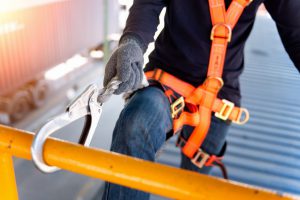Scaffolding is a crucial part of the construction process. Although most might not consider scaffolding a dangerous task, thousands of workers end up with various types of injuries in scaffolding-related accidents, along with fatalities.
Like other construction tasks with their share of risks, being familiar with the hazards and following proper measures to lessen the risk will significantly help minimize injuries.
While there are various types of scaffolding, the most common on construction sites involves fabricated modular frame types offering quick assembly, ensuring versatility for multiple tasks and heights.
Aside from the general scaffolding costs to consider, the primary safety concern when working on scaffolding is whether or not it’s safe to work on.
There are different ways to maintain safety during scaffolding. It’s also crucial for workers to take the necessary precautions for their safety. Here are several safety considerations when working on scaffolding in construction or industrial settings.
Table of Contents
1) Use Proper Safety Equipment And Gear
As a high-risk task, personal protective equipment (PPE) is crucial when working in any construction or industrial setting, especially at significant heights.
The majority of injuries that occur on scaffolding involve falling objects. With this in mind, wearing a hard hat is essential in preventing serious injury. Additionally, using non-slip footgear and fall arrest equipment is crucial when working on platforms.
2) Determine All The Relevant Regulations And Standards
Depending on the industry you’re in, each place has its specific rules and standards to follow. These regulations may vary from one state to another.
Generally, these regulations involve the proper use of scaffolding. With this in mind, make it a priority to know the laws in your area before setting up any platforms.
You’re more likely to prevent an accident while avoiding liability for failing to comply with the standards. Whether you’re considering scaffolding tower hire or any type suitable for your needs, make sure you’re familiar with the safety standards.
3) Consider The Load Limits
Generally, scaffolding materials and designs come with specific load-bearing capabilities. It’s essential that the scaffolding you’ll use best suits that task.
Choosing components that couldn’t support the types of loads you intend to use will pose a serious risk to workers. Remember that the platforms are likely to break, crack or collapse entirely, possibly causing severe injuries for those working in the vicinity.
4) A Thorough Inspection Of The Site And Scaffolding Materials
Before setting up the platforms, it’s crucial to inspect all materials before the construction process. Ensure that no defects or damage can compromise the overall structural integrity of the scaffolds.
Additionally, all the components must come from the same manufacturer and be compatible. Avoid the mistake of mismatching the components or parts since it can pose a significant hazard and potentially result in structural failure.
Even after erecting the scaffolding, it requires ongoing inspections. The area around the scaffold should undergo examination for timely detection of hazards, defects, debris, and other factors that can bring about problems.
5) Proper Assembly
In any scaffolding, carefully follow the instructions by the manufacturer during the assembly. In particular, you need to utilize the right kinds of bracings and fasteners. It’s best to include the guard rails when assembling the scaffold and use materials from quality manufacturers.
When building the scaffolding, make sure to ensure the area is safe. If possible, a level ground surface works best, and try to avoid intersecting with any power lines on your way up.
6) Maintain Vehicles And Heavy Equipment At A Safe Distance
Any vehicles and heavy equipment must be kept clear from the scaffold base. Setting up barriers to prevent collisions with the base can keep the entire structure from toppling. If heavy equipment is necessary, always provide enough clearance at all times.
7) Maintain Proper Organization
Make it a priority to organize and put away all tools and equipment after use. At the end of each workday, check if any tools and materials are on the platform. Remember that clutter can increase the risk for trip and fall injuries or pose a hazard for those working on the lower levels.
8) Pay Attention To The Weather
When working on heights, make it a priority to ensure safe working conditions at all times. Working during harsh weather conditions or other environmental hazards can be dangerous.
Strong winds can pose a risk of injury among those working on the scaffold. If bad weather can bring down a power line, it can do the same for scaffolding.
9) Proper licensing
Individuals who are licensed to work on scaffolding will be an advantage. Doing so will significantly prevent injuries since everyone on the site will be well aware of the potential hazards and familiar with ways to mitigate them.
The process of becoming licensed typically involves ongoing education and training, allowing your team to work safely and efficiently.
Final Thoughts
When it comes to scaffolding, it’s crucial to maintain a high level of safety at all times to minimize potential injuries during the job. Considering these safety considerations, whether in construction or industrial scenarios, will effectively help maintain safety and efficiency at all times.







